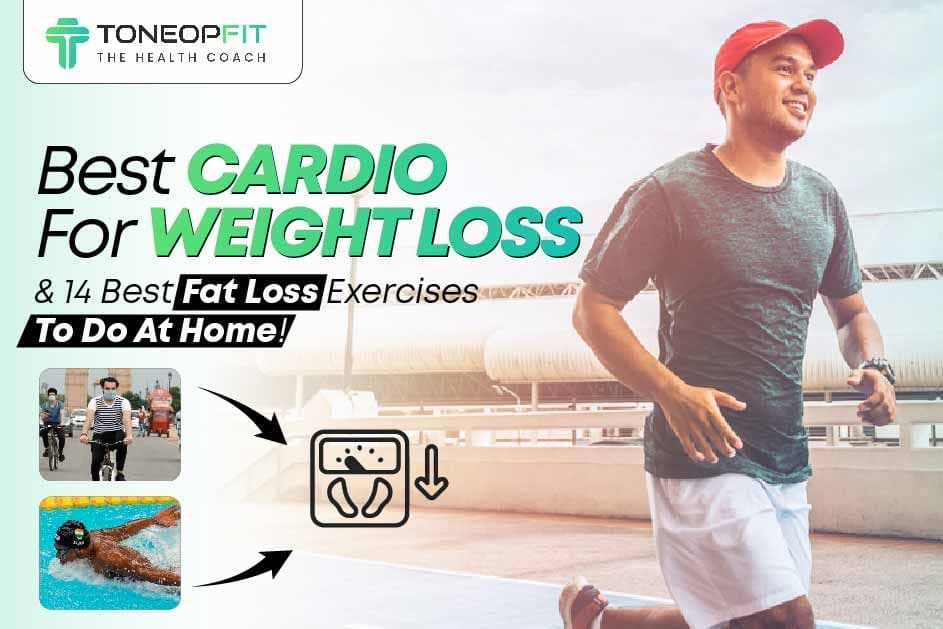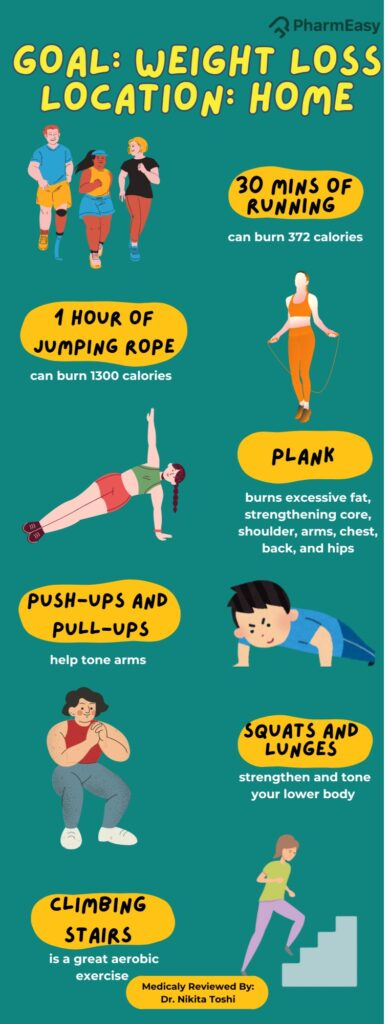Are you trying to lose weight and wondering if cardio is the best way to get there? You’ve probably heard that running, cycling, or jumping rope can melt the pounds away.
But is cardio really the most effective method for your weight loss goals? Before you lace up your shoes and hit the treadmill, let’s uncover the truth behind cardio and weight loss. By the end of this article, you’ll have a clear answer and practical tips tailored just for you.
Keep reading—you might be surprised by what you learn!
Cardio And Weight Loss Basics
Cardio exercise is any activity that raises your heart rate. It helps burn calories and improve fitness.
Losing weight happens when you burn more calories than you eat. Cardio can help create this calorie deficit.
How Cardio Burns Calories
Cardio makes your body work harder, so it uses more energy. This energy comes from calories stored in your body.
The more intense and longer your cardio session, the more calories you burn. This helps reduce body fat over time.
- Your heart beats faster during cardio, increasing calorie use
- Muscles need more energy to keep moving
- Your body keeps burning calories even after exercise
Types Of Cardio Exercises
There are many kinds of cardio exercises. Some are easy, and others are more intense.
Choosing a type you enjoy can help you stick with it and lose weight.
- Walking: Low impact and good for beginners
- Running: Burns many calories quickly
- Cycling: Good for legs and heart
- Swimming: Works whole body with low joint stress
- Jump rope: High intensity and burns calories fast
- Group classes: Like aerobics or dance, fun and social

Comparing Cardio With Other Methods
Cardio exercises burn calories and help with weight loss. Many people think cardio is the best way to lose weight.
Other methods like strength training and diet also play important roles. Let’s compare cardio to these methods.
Strength Training Benefits
Strength training builds muscle and increases metabolism. More muscle means your body burns more calories at rest.
This helps with long-term weight loss. Strength training also improves body shape and strength.
- Builds muscle mass
- Raises resting calorie burn
- Improves bone health
- Shapes your body
Role Of Diet In Weight Loss
Diet controls calorie intake. You can lose weight only if you eat fewer calories than you use.
Eating healthy foods gives your body energy. It also helps keep you full and reduces cravings.
- Controls calorie intake
- Provides energy for workouts
- Reduces hunger and cravings
- Supports muscle growth and repair
Combining Cardio And Strength
Cardio and strength training work well together. Cardio burns calories while strength training builds muscle.
Doing both helps you lose fat and keep muscle. This leads to a healthy and strong body.
- Burns calories during cardio
- Builds muscle with strength training
- Improves overall fitness
- Supports long-term weight loss
Impact Of Cardio On Metabolism
Cardio exercise plays a key role in how your body burns calories. It helps increase your metabolism during and after workouts.
Understanding the effects of cardio on metabolism can help you plan your weight loss better.
Afterburn Effect Explained
The afterburn effect means your body keeps burning calories after cardio. This happens because your body needs energy to recover.
During this time, your metabolism stays higher than normal, which helps you lose weight.
- Body repairs muscles and tissues
- Energy is used to restore oxygen levels
- Metabolism stays elevated for hours
Long-term Metabolic Changes
Regular cardio can change your metabolism over time. It can increase your resting metabolic rate, meaning you burn more calories even at rest.
These changes help maintain weight loss and improve overall energy use in your body.
- More muscle mass improves calorie burning
- Better heart and lung function supports metabolism
- Improved insulin sensitivity helps energy use
Common Cardio Mistakes
Many people think cardio is the best way to lose weight. Cardio can help burn calories, but some mistakes can slow progress. Avoiding these errors can improve your results.
Learning about common cardio mistakes helps you use your time well. It also keeps you safe and healthy during workouts.
Overtraining Risks
Doing too much cardio can hurt your body. Overtraining causes tired muscles and weakens your immune system. It may also lead to injuries.
Rest days are important to let your body heal. Without enough rest, you can feel tired all the time and lose motivation.
- Muscle soreness lasts longer
- Increased chance of injury
- Lower energy during workouts
- Feeling tired or sick
Ignoring Recovery
Skipping recovery time can block your weight loss progress. Your body needs time to repair muscles and restore energy after cardio.
Ignoring recovery can cause burnout and reduce workout quality. Stretching, rest, and sleep are key parts of recovery.
- Include rest days in your schedule
- Stretch after workouts
- Get enough sleep every night
- Listen to your body’s signals
Underestimating Nutrition
Cardio alone is not enough to lose weight. Eating healthy food supports your workouts and helps burn fat. Poor nutrition slows down results.
Some people eat too much after cardio, thinking they burned many calories. This can stop weight loss or cause weight gain.
- Eat balanced meals with protein, carbs, and fats
- Avoid high-calorie snacks after exercise
- Drink water to stay hydrated
- Plan meals to support your goals
Personalizing Weight Loss Plans
Cardio is a popular choice for weight loss. Still, it is not one-size-fits-all. Personalizing your plan makes it more effective.
Understanding your body and needs helps you pick the best cardio and intensity. This approach keeps you motivated and safe.
Finding The Right Cardio Intensity
Cardio intensity affects how many calories you burn. Low intensity is easier but burns fewer calories. High intensity burns more but can be tiring.
Choose a level you can keep for 20 to 60 minutes. Listen to your body and adjust if you feel pain or extreme tiredness.
- Low intensity: walking or light cycling
- Moderate intensity: brisk walking or steady jogging
- High intensity: running or interval training
Incorporating Variety
Doing the same cardio every day can get boring. Variety helps keep your workouts fun and works different muscles.
Try mixing activities like swimming, biking, or dancing. Changing your routine also helps avoid plateaus in weight loss.
- Alternate between running and cycling
- Try group classes or workout videos
- Include strength exercises for balance
Tracking Progress Effectively
Tracking your progress helps you see what works. Use simple tools like a notebook or apps to record workouts and weight.
Note how you feel after exercise and any changes in energy. This information guides adjustments to your plan.
- Track workout type, duration, and intensity
- Record weight and body measurements weekly
- Write down energy levels and mood changes


Frequently Asked Questions
Is Cardio The Most Effective Exercise For Weight Loss?
Cardio burns calories quickly, aiding weight loss. However, combining cardio with strength training boosts metabolism and preserves muscle for better results.
How Long Should Cardio Workouts Be To Lose Weight?
Aim for at least 150 minutes of moderate cardio weekly. Sessions of 30-60 minutes, five times a week, effectively promote weight loss and overall health.
Can Cardio Alone Help Maintain Weight Loss?
Cardio helps maintain weight by burning calories and improving metabolism. However, balanced nutrition and strength training are essential for long-term weight management.
What Types Of Cardio Are Best For Fat Burning?
High-intensity interval training (HIIT) and steady-state cardio both burn fat. HIIT offers quick, intense bursts; steady cardio suits longer, moderate-paced sessions for fat loss.
Conclusion
Cardio helps with weight loss. It’s not the only way, though. Strength training and a balanced diet play important roles, too. Mixing different exercises keeps things interesting. It also helps target various muscle groups. Consistency matters more than intensity. Find activities you enjoy.
This makes it easier to stick with your routine. Listen to your body. Rest when needed. Weight loss takes time and patience. Stay motivated and focused on your goals. A healthy lifestyle brings lasting results.



